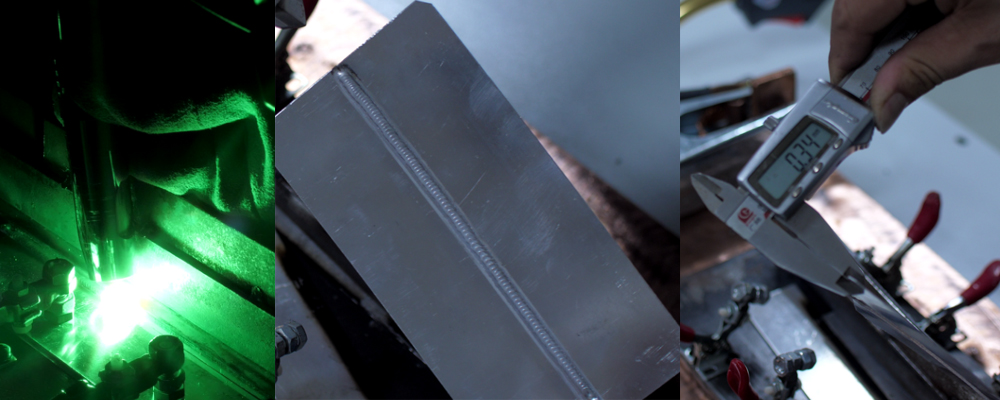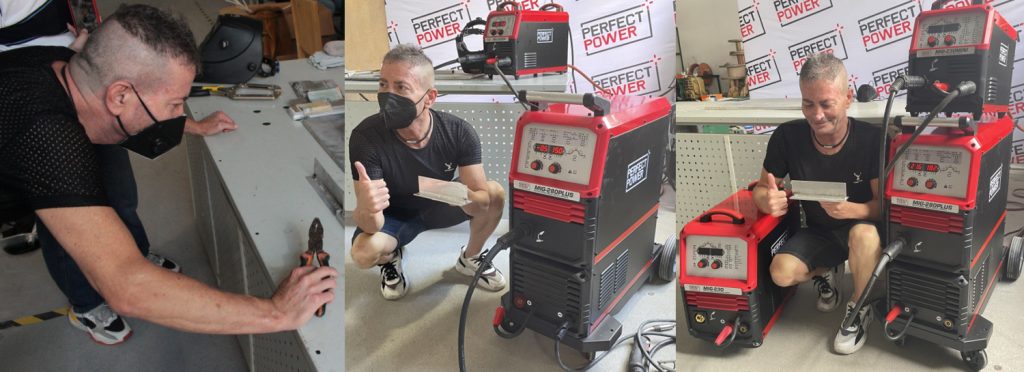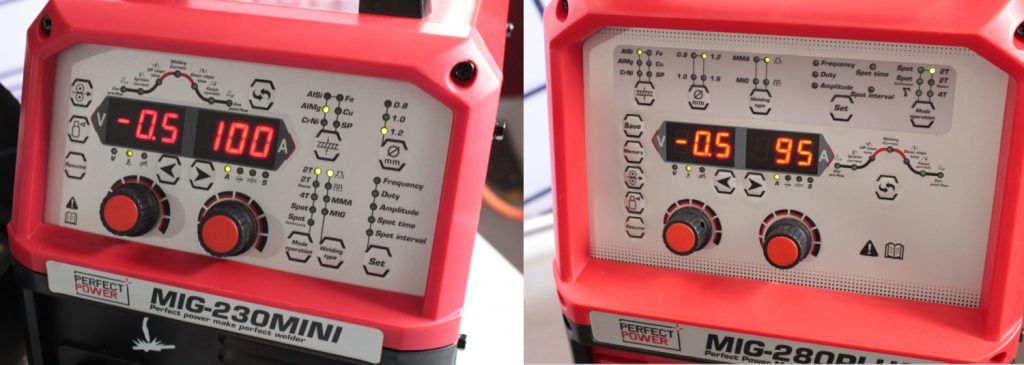
MIG welding is widely utilized for welding thin metals. Follow these step-by-step instructions to successfully perform MIG welding on thin materials:
1. Select the Appropriate Shielding Gas
In MIG welding, the shielding gas plays a crucial role in preventing oxidation of the weld and influencing the appearance of the weld bead. For thin metals, it is important to choose a shielding gas that minimizes spatter during the welding process.
Opt for shielding gases with a high concentration of argon.
2. Choose the Right Filler Metal
The filler metal is the material that melts into the weld and fills the gap between the two pieces being joined. MIG welding simplifies the feeding of filler metal, making the welder’s job easier. While the specific material may not be critical, the form of the filler metal is important when working with thin sheet metal.
3. Adjust the Torch Angle
Modifying the torch angle during MIG welding significantly helps prevent burn-throughs. Regardless of the welding position, make sure to adjust the angle to reduce the distance between the torch tip and the metal surface. This creates a more stable arc, enhancing control over the weld and reducing the risk of burn-through.
Ensure that you use very thin wires when welding with delicate, thin sheet metal.
| Metal Thickness (inches) | Recommended MIG Wire Size (inches) |
|---|---|
| 0.024 | 0.020 |
| 0.030 | 0.023 |
| 0.036 | 0.025 |
| 0.048 | 0.030 |
| 0.060 | 0.035 |
4. Consider Pulsing
In addition to your regular MIG welding technique, you can experiment with pulsing when working with thin metals. Pulsing involves heating a small portion of the plates being joined, allowing the weld pool to solidify before filling in the joint. While pulsing requires practice to master, it provides greater control over the energy output during welding.
Please note that practice and experimentation are key to achieving proficiency in welding thin metals with MIG welding.
Read More:
Aluminum welding has a unique set of challenges, it has a lower relative melting point than other metals, yet requires heat to ensure proper weld pool formation. One critical step while working with aluminum is the cleanliness of the parent metal and it is more sensitive to heat input and distortion than other metals. The pulse MIG process allows the operator much greater thermal control to apply enough heat for a successful weld, whilst avoiding distortion or burn-through.
MIG welding on aluminum is now becoming more and more common due to advances in technology in welding machines. Technology advancement has made Pulse/Double Pulse MIG welding more viable in applications where increased production is highly achievable without sacrificing the quality or appearance of the results. PERFECT POWER, as the Welding & Cutting Machine Solution Provider is well equipped with high-quality Pulse/Double Pulse MIG welding machines for every welding application. Here we would like to introduce our Expert in Thin Aluminum Welding –the Double Pulse Digital Control MIG/MAG series, especially to you.
This series includes MIG-230MINI, MIG-230, MIG-280, MIG-280PLUS, MIG-350, MIG-350W, MIG-500, and MIG-500W to fit all your demands of welding either on daily metal fabrication or heavy-industry application. The MIG-230MINI/230 and MIG-280/280PLUS can weld the Aluminum sheet at a thickness of 0.35mm.

Based on the original design, we’ve updated the MIG-230MINI/230 and MIG-280/280PLUS from pure MIG/MAG welding machines to 3 in 1 multifunctional MIG/MAG welders with the market feedback.
Before sharing more about these models, we would like to share something about the Double Pulse MIG.
Double Pulse also known as dual-pulse or pulse-on-pulse, adds an additional pulse ‘wave’, where the current alternates (or cycles) between the main current level and a secondary current level. This effectively multiplies the benefits of single-pulse, with even better thermal control, weld quality, and appearance. See how the weld quality and appearance by our machines.

Our customer who comes for product inspection just can’t stop saying how beautiful welding bead it is and it’s the best welding effect that we’ve ever seen. So what makes the MIG-230MINI/230 and MIG-280/280PLUS being so great? We spent a lot of time on this series from the beginning and cooperated with HIT to develop the core technology. With countless testing, it works successfully with precise digital output by the digital CPU control system to reach an excellent welding performance and to become an expert in Thin Aluminum Welding in the market.

The MIG-230MINI/230 and MIG-280/280PLUS have something in common as below.
- Minimum working current: 20A.
- Cover 5 major metal materials: Aluminum(min. 0.35mm), Stainless Steel(min. 0.5mm), Copper(min. 0.5mm), Carbon Steel(min. 0.5mm) and Galvanized sheet(min. 0.5mm).
- Inverter frequency: 35KHz.
- 100% duty cycle @ 180A.
- Multi-function welding: MIG/MAG, Pulse MIG, Double Pulse Mig, Flux-cored wire welding and MMA.
- Memory function.
The difference between them is,
- MIG-230MINI/230 is with 2 drive-rollers and MIG-280/280PLUS is with 4 drive-rollers.
- MIG-280/280PLUS could work with the industrial robots to achieve automatic welding.
- The max. the output current of MIG-230MINI/230 is 220A and MIG-280/280PLUS is 250A

All settings are clear to see on the control panel, easy to operate and do parameter adjustments. The synergic function is available for them, it can make your setting really easy and picks all the best settings for you. If you are an experienced welder and want to achieve more precise welding results, you can choose non-synergic and input every value yourself.
Pulse/Double Pulse MIG welding can be used for both thick and thin aluminum, on thicker sections, it helps minimize downtime for repositioning parts since it generates a cooler weld pool than the traditional spray transfer process, making it usable in all welding positions.

Pulse/Double Pulse welding also totally eliminates spatter, so you won’t have any post-weld cleanup.

Pulse/Double Pulse welding isn’t the only way that works with any of these applications, but it certainly makes some of the more difficult kinds of welding a lot easier.
Please let us know what’s your opinions about the Expert of Thin Aluminum Welding we talk about.



